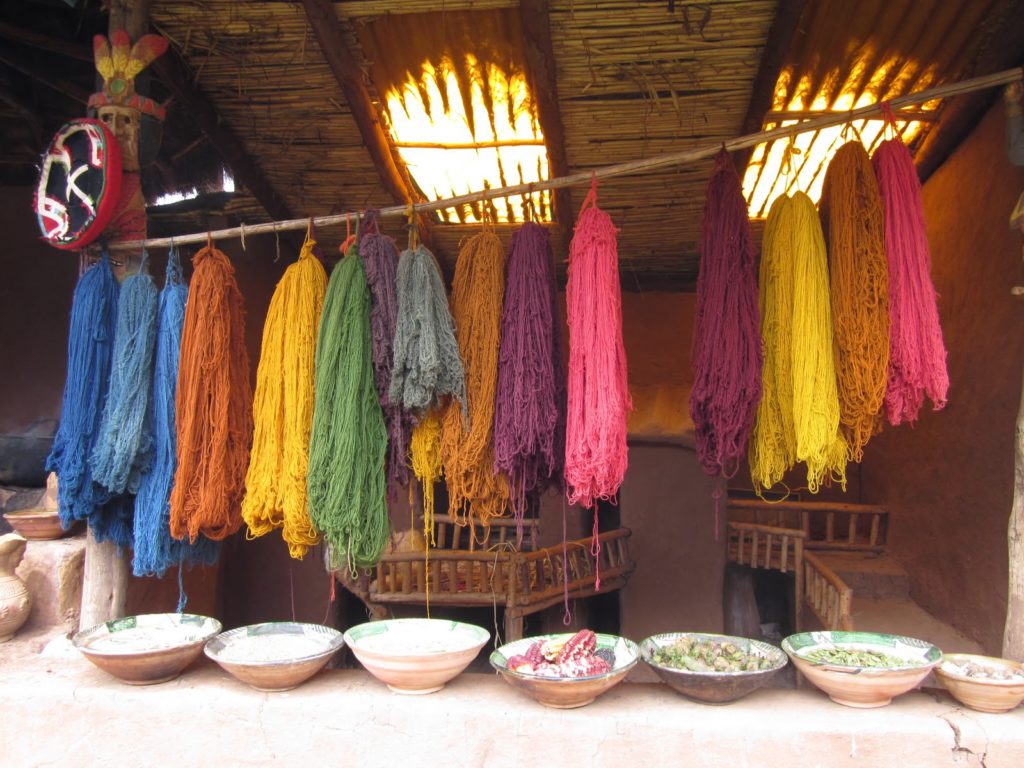Ethnic rugs are woven with wool dyed with natural pigments of vegetable or animal origin. Obtaining different shades to dye wool is an ancestral art, a wisdom that requires a deep knowledge of the environment and that is not achieved in one generation. It is the merit of a culture, of a history transmitted from parents to children and enriched over the years.

The leaf of the cinnamon, peach or mint, the flower of the tea leaf, the wattle (similar to moss), the bark of the radal, the peel of the purple onion, the root of the relbún, the blueberries in fruit, the branch and leaf of the Chilco… All these leaves, flowers, futas and lichens and many others that we have not named are the raw material to give color to sheep, llama or alpaka wool. These colorful wools will be woven into warm blankets, ethnic rugs, aguayos, skirts, ponchos…
The person skilled in extracting the color pigments is the “kelutufe domo”. She is very close to nature and is in charge of collecting species, often with the help of her family. These are boiled for an hour or more in water, in an iron pot on the fire, to extract their color. In this dyed water the wool is immersed and mordants are added, such as vinegar, kitchen salt, alum stone and some sulfates, to fix the color. The wool should be boiled for at least 15 minutes and if the color is to be more intense, it should be left longer or even let the wool stand in the water for a whole day.

An interesting point is that you can try to get the same color, but being such a natural process it is practically impossible to replicate, even if the person trying to do it is an expert.
In each area, depending on the plant variety, certain tones will predominate. The colors of Peru and Bolivia are influenced by the presence of a parasite that lives in prickly pear cactus, a type of cactus that is very common in hot climates. From the cochineal, the colorant usually called “carmine” and internationally known as “natural red colorant number 4” is extracted.




